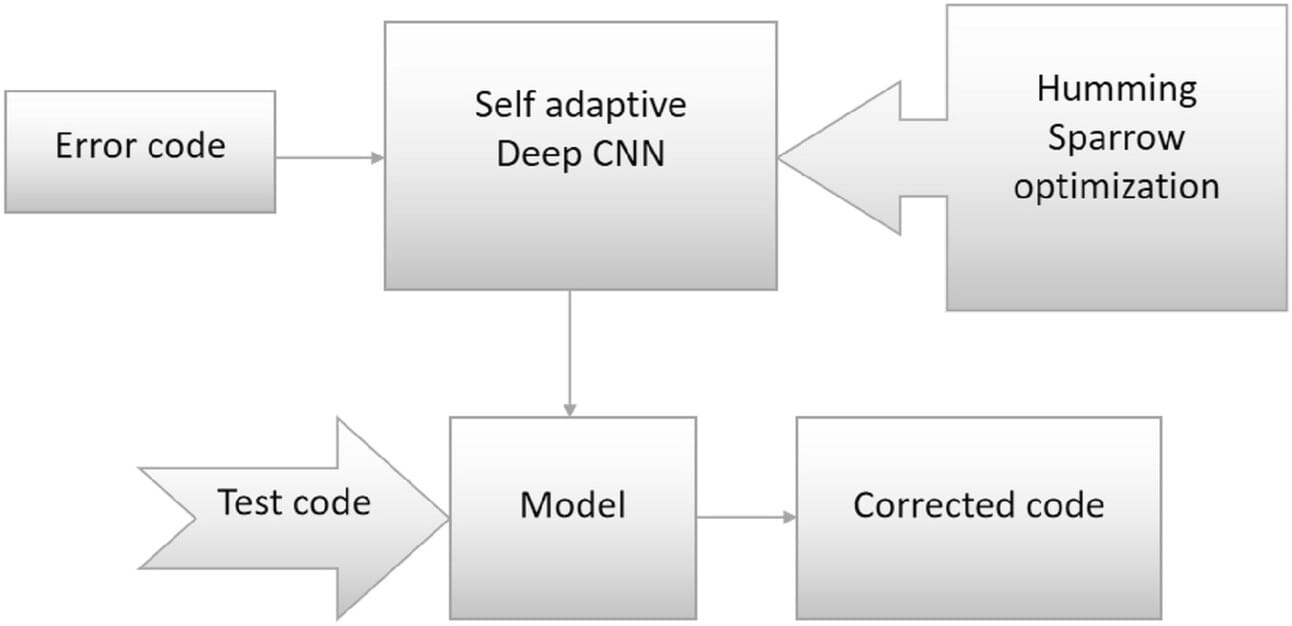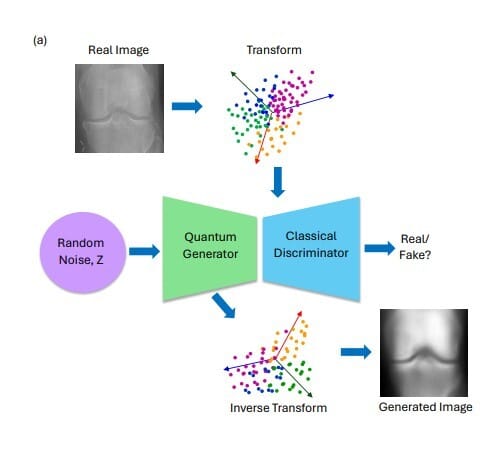- The Daily Qubit
- Posts
- The Daily Qubit
The Daily Qubit
💳️ 💸 Friday is quantum payday -- from CU Boulder's shiny new Nanofab Hub to multimillion-dollar funding rounds

Welcome to the Quantum Realm.
💳️ 💸 Friday is quantum payday. From CU Boulder's new nanofab hub to groundbreaking partnerships and multimillion-dollar funding rounds, it's clear that the future of quantum is bright—and heavily backed.
🗓️ THIS WEEK
Sunday, June 23 | QTM-X Quantum Education Series 5 of 10: Quantum Hardware
📰 NEWS QUICK BYTES
🏗️ CU Boulder just got a nanofab hub: The National Science Foundation has awarded a $20 million grant to CU Boulder to establish the National Quantum Nanofab. This facility will be constructed over the next five years and will provide state-of-the-art nanofabrication tools for creating technologies such as atomic clocks and quantum computer chips.
🕰️ A little bit of time fixes everything, even quantum computer errors: Physicists propose using temporal circuit boards made from time crystals to address error issues in quantum computers. Ultracold atoms form time crystals to allow qubits to interact without degradation. They are currently working on building a prototype using ultracold potassium.
🏞️ A Munich Quantum Valley: IQM Quantum Computers has inaugurated its first quantum data center in Munich, Germany. Currently housing two quantum machines, the plan is to expand to 12 as part of the "Munich Quantum Valley" initiative, supported by a €300 million funding package. IQM also recently launched Germany's first hybrid quantum computer and its quantum cloud service, IQM Resonance, to support quantum algorithm development and testing.
🚗 A Classiq Partnership: Classiq, NVIDIA, and BMW have teamed up to optimize mechatronic systems in electric vehicles using advanced quantum algorithms. By using techniques like QAOA and HHL, the collaboration achieved a highly complex quantum program that reduced energy waste.
💵 Put your money on quantum — or just watch others do it: QpiAI secures $6.5M to develop scalable 25-qubit quantum computers and integrate them with generative AI. Qblox secures $26M Series A to to accelerate the development of its scalable quantum control stack. And Wave Photonics secures $5.8M to pursue the development of integrated photonic chips for quantum technologies, sensors, and data centers.
How many qubits was today's newsletter? |
☕️ FRESHLY BREWED RESEARCH
Quantum error-correction using humming sparrow optimization based self-adaptive deep cnn noise correction module: A Humming Sparrow optimization-based self-adaptive deep convolutional neural network for quantum error correction in heavy hexagonal codes shows improvements in accuracy and error reduction. By combining deep learning and optimization, the model adapts dynamically to error patterns and minimizes both logical and bit error rates. Breakdown here.
Quantum Generative Learning for High-Resolution Medical Image Generation: A quantum image generative learning approach is used for generating high-quality medical images. Variational quantum circuits and principal component analysis address the scalability and mode collapse issues prevalent in traditional QGANs. Breakdown here.
High-Rate and High-Fidelity Modular Interconnects between Neutral Atom Quantum Processors: A high-rate and high-fidelity method for generating remote entanglement between neutral atom quantum processors is shown to advance the scalability of modular quantum computing. By using a twisted ring cavity design and efficient photon detection techniques, the study achieves an unprecedented Bell pair generation rate with near-perfect fidelity.
Stripping Quantum Decision Diagrams of their Identity: A new structure for quantum decision diagrams is constructed by removing identity nodes. This significantly reduces the number of nodes required and eases the pressure on key data structures making the new structure more natural for quantum computing and greatly improving performance.
Queen: A quick, scalable, and comprehensive quantum circuit simulation for supercomputing: An advanced quantum circuit simulation toolkit that improves performance and scalability on multi-GPU systems through cache-aware implementations and optimized quantum gate operations is introduced.
UNTIL TOMORROW.
BREAKDOWN
Quantum error-correction using humming sparrow optimization based self-adaptive deep cnn noise correction module
🔍️ SIGNIFICANCE:
Traditional quantum error correction methods face significant limitations, including high computational overhead and difficulty in adapting to various quantum hardware architectures. The proposed Humming Sparrow optimization-based self-adaptive deep convolutional neural network noise correction model is specifically tailored for heavy hexagonal codes and superconducting qubits.
🧪 METHODOLOGY:
A deep convolutional neural network processes quantum states as input and learns to identify and correct error patterns. The CNN architecture includes convolutional layers for feature extraction, pooling layers for dimensionality reduction, and dense layers for final classification.
The SADCNN model incorporates a self-adaptive mechanism that adjusts its architecture, learning rates, weights, and biases dynamically based on the specific characteristics of the error codes generated by heavy hexagonal codes. This adaptability is effective for addressing the varying error patterns in quantum computations.
The HSO algorithm is used to fine-tune the SADCNN model's parameters. It combines the herding behavior of Humming Bird optimization and the tracing behavior of Sparrow search optimization for efficient exploration and exploitation of the solution space. This iterative optimization process helps in achieving the best possible configuration for the CNN.
Performance metrics included accuracy, logical error probability, and bit error rate, measured under varying training percentages and k-fold settings.
📊 OUTCOMES & OUTLOOK:
The HSO-based SADCNN model achieved an accuracy rate of 97.35% under a training percentage of 90%, which is higher than the comparison models, including logistic regression, decision tree, and other deep learning-based models.
The logical error probability was 5.51, which indicates a reduction in the likelihood of errors affecting the logical state after error correction. And the bit error rate was reduced to 3.72, which shows the model's efficiency in accurately determining the classical bits associated with measured quantum states.
The research suggests the potential integration of quantum reinforcement learning to further improve the model's adaptability and efficiency in real-time error correction.
Source: Shinde, U.U., Bandaru, R. Quantum error-correction using humming sparrow optimization based self-adaptive deep cnn noise correction module. Sci Rep. (2024). https://doi.org/10.1038/s41598-024-65182-2
BREAKDOWN
Quantum Generative Learning for High-Resolution Medical Image Generation
🔍️ SIGNIFICANCE:
Traditional quantum generative adversarial networks often fail to produce high-quality images due to only capturing local details while ignoring global structures and semantic information. This addresses these limitations by proposing a quantum image generative learning approach for generating high-quality medical images.
🧪 METHODOLOGY:
The QIGL approach involves a quantum generator and a classical discriminator, following the traditional GAN framework. The quantum generator uses variational quantum circuits, which involve fixed gates for entangling qubits and tunable gates optimized during training. This generator processes random noise vectors, with each element corresponding to a qubit in the quantum circuit.
The input noise is embedded using rotational gates, and parameterized weights are encoded on each quantum layer, entangling the qubits with controlled-Z gates.
Principal component analysis is used to transform real input images into principal components, which are then re-scaled and processed by the discriminator. The use of PCA addresses scalability issues by focusing on the most significant features of the images rather than individual pixels.
The QIGL model was tested on medical image datasets, including knee osteoarthritis and medical MNIST datasets.
📊 OUTCOMES & OUTLOOK:
QIGL outperformed classical WGAN and other QGAN models in generating high-quality images. QIGL also achieved the lowest Frechet Inception Distance scores, indicating superior image quality.
The integration of the Wasserstein distance within the QIGL framework addressed mode collapse and resulted in diverse and realistic image samples.
Additionally, the QIGL model used approximately 2000 times fewer training parameters as compared to its classical counterpart.
Source: Amena Khatun and Kübra Yeter Aydeniz and Yaakov S. Weinstein and Muhammad Usman. Quantum Generative Learning for High-Resolution Medical Image Generation. arXiv quant-ph. (2024). https://arxiv.org/abs/2406.13196v1
Support Science
Waking up before the world to dive into the quantum realm isn't just our job—it's our calling. And we're dreaming big with exclusive content for our community. If our work lights up your day, consider showing some love. Your support unlocks worlds—seen and unseen.
Interested in collaboration or promoting your company, product, job, or event to the quantum computing community? Reach out to us at [email protected]


